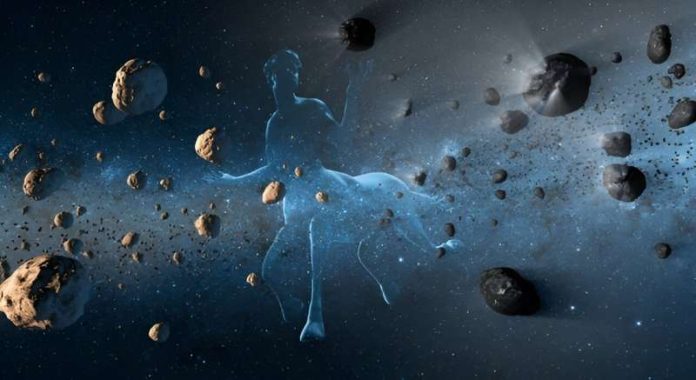A recent study published in The Planetary Science Journal has unveiled a groundbreaking achievement: NASA’s James Webb Space Telescope (JWST) has successfully detected carbon dioxide in a centaur, specifically centaur 39P/Oterma. Centaurs are small celestial bodies that orbit between the planets Jupiter and Neptune, often crossing the orbits of gas giants within our solar system.
These enigmatic centaurs share characteristics with both comets and asteroids, yet up until now, carbon monoxide was the only molecular component detected in two known centaurs. The detection of carbon dioxide in centaur 39P/Oterma marks a pivotal moment in our understanding of the formation, evolution, and composition of not only centaurs but also the early solar system.
Dr. Olga Harrington Pinto, the lead author of the study and a postdoctoral researcher at Auburn University, emphasizes the significance of studying centaurs, as they offer valuable insights into the chemical composition and physical processes of the early solar system. Centaur 39P/Oterma, discovered by Finnish astronomer Dr. Liisi Oterma in 1943, exhibits a centaur-like orbit between Jupiter and Saturn and has a radius of approximately 2.21 to 2.49 kilometers (1.37 to 1.55 miles).
What sets 39P/Oterma apart is its status as an “active centaur,” meaning it develops a coma and a tail like a typical comet. This unique activity allows scientists to employ spectroscopy to observe the molecules in its coma, providing vital information about its composition.
For their study, researchers utilized JWST’s Near-Infrared Spectrograph (NIRSpec) instrument, supplemented by ground-based observations from the Gemini North Observatory and Lowell Discovery Telescope. These observations were conducted while 39P/Oterma orbited near its perihelion, the closest point to the sun, at a distance of 5.82 astronomical units (AU) in July 2022.
The perihelion of 39P/Oterma has gradually increased since its discovery, reaching 3.39 AU in 1958, 5.47 AU in 1983, and 5.71 AU in 2023. It is projected to reach 5.91 AU and 6.15 AU in 2042 and 2246, respectively.
Upon analyzing the JWST NIRSpec data, the researchers made several remarkable discoveries. They confirmed the first-ever detection of carbon dioxide in any centaur, marking the lowest amount of carbon dioxide ever recorded in a centaur or comet. Interestingly, there were no traces of water or carbon monoxide, which are traditionally detected in centaurs like 29P/Schwassmann-Wachmann 1 (29P/SW1), another centaur sharing a similar AU distance with 39P/Oterma.
These findings hold substantial importance as they demonstrate the incredible capabilities of the JWST, allowing us to observe low production rates of a relatively small and distant object. The different chemical behavior of 39P/Oterma compared to 29P/SW1 at a similar distance raises questions about the impact of centaur size, orbital history, initial composition, or a combination of factors.
The discovery of carbon dioxide in a centaur could revolutionize our understanding of the compositions and characteristics of centaurs, asteroids, and comets throughout the solar system. It may also provide valuable insights into the formation and evolution of the entire solar system.















